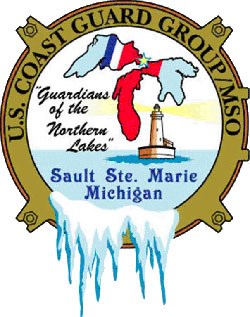NEWS RELEASE
U.S. NATIONAL COAST GUARD
***************************** SAULT STE. MARIE, MI - U.S. Coast Guard Vessel Traffic Service St. Marys River, nicknamed "Soo Traffic," in Sault Sainte Marie will turn 115 years old March 6.
Soo Traffic exists to prevent groundings, rammings and collisions in the St. Marys River and mitigate their environmental impact by sharing information and implementing appropriate traffic management measures.
During fiscal year 2010, Soo Traffic assisted a total of 61,532 vessels including ferries, tour boats, tankers and freighters as they transited through the St. Marys River.
Many of these commercial vessels pass through the Soo Locks to complete their shipping routes and arrive at several ports of call within Lake Superior.
On March 6, 1896, Title 33, U.S. Code, 474 was signed in to law and directed the commandant of the U.S. Revenue Cutter Service to prescribe appropriate rules and regulations regarding the movement and anchorage of vessels and rafts in the St. Marys River from Point Iroquois on Lake Superior to Point Detour on Lake Huron.
This marked the beginning of the St. Marys River Vessel Traffic Management System (VTMS).
Originally named the River Patrol Service, the first VTMS was comprised of the Revenue Cutter Morrell and lookout stations at Johnson's Point, Middle Neebish Dyke and Little Rapids Cut.
The stations were connected by telegraph lines linked back to the Pittsburgh Steamship Company offices in Sault Ste. Marie.
Throughout the next several years, many lookout stations were established and then closed as needs and funding levels fluctuated.
At one point there were as many as 11 active stations along the river.
During the early days, lookouts communicated with passing ships by kerosene lanterns and signal flags.
Often messages were delivered to passing ships by lookouts rowing out to them in small dinghies.
In 1909, the West Neebish Channel was completed and Lookout station number four was established.
This deep draft channel enabled larger vessels to sail down river with more cargo than the Middle Neebish Channel allowed.
It also improved the safety of vessels traveling in both directions since traffic was routed one way in the extremely hazardous areas around Neebish Island.
Loaded vessels with deeper drafts transited down river on the west side of the island and lighter vessels in ballast traveled up river on the east side.
On Jan. 30, 1915, the Revenue Cutter Service merged with the U.S. Lifesaving Service to form the U.S. Coast Guard.
***************************** ///
